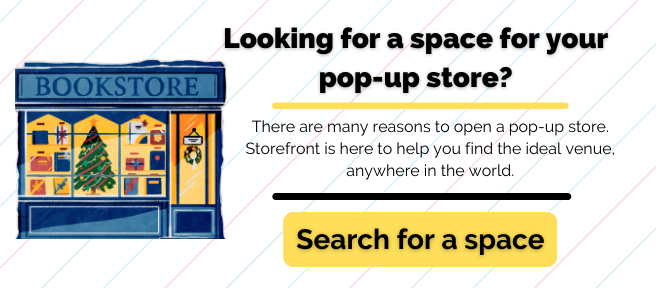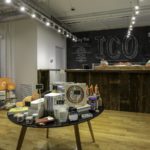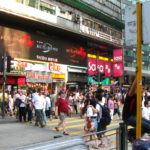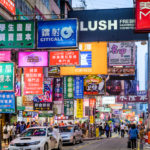‘What is a pop-up shop?’ is a question we get asked frequently. Fortunately, the answer is simple. A pop-up shop is the term given to a shop or store that is deliberately temporary. It’s a store that “pops-up” for a limited period of time to achieve a particular goal.
Overall, pop-up retail is becoming more and more common, challenging the traditional brick-and-mortar retail of long leases and large transaction-based flagship stores.
A pop-up store can look like a regular store, but many brands use them to create unique and engaging physical shopping experiences because they provide flexibility and the opportunity to experiment with less risk.
You’ve probably already experienced pop-up retail. They’re getting more and more popular with customers and retailers. Some of them you may not have even known were pop-ups, they often look like regular stores. Many brands rum traveling pop-up shops which they install in a location and then move it to another retail location every few months.
History of “pop-up” retail
While the concept of temporary shared retail spaces has been around for centuries (think markets or fairs) the term “pop-up retail” can be traced back to the late 90s. Media entrepreneur Patrick Courrielche ran an event called The Ritual Expo in Los Angeles in 1997. It was a one day event that brought together music, food and fashion in a single shopping experience. Nicknamed the one day “Ultimate Hipster Mall”, it was hugely successful with its mix of retail stores and experiences. In the years following The Ritual Expo many big brands including AT&T, Levi-Strauss, and Motorola worked with Courrielche to create pop-up shopping experiences across the USA.
Over the next 20 years the modern pop up retail store as we know it evolved. In the face of the so-called ‘retail apocalypse’ and the decline of the traditional retail model, flexible retail and pop-up stores have come to the fore.
What are the benefits of a pop-up shop?
Pop-up retail is hugely beneficial for customers, retailers and landlords alike. There’s a reason we’re seeing more and more of them. Often situated in places with high foot traffic, pop-up shops are a valid way to increase sales, but, as you can see from the below, there are many more benefits:
Read More: Reasons to open a pop-up shop. Top 7 business benefits to opening a pop-up shop
Customer benefits
- More diverse and fluctuating retail stores, high streets and shopping malls. Wider variety and more excitement.
- Opportunity to explore new brands and products
- Pop-up shops are more likely to offer discounts, giveaways and event specific concessions than traditional retail establishments.
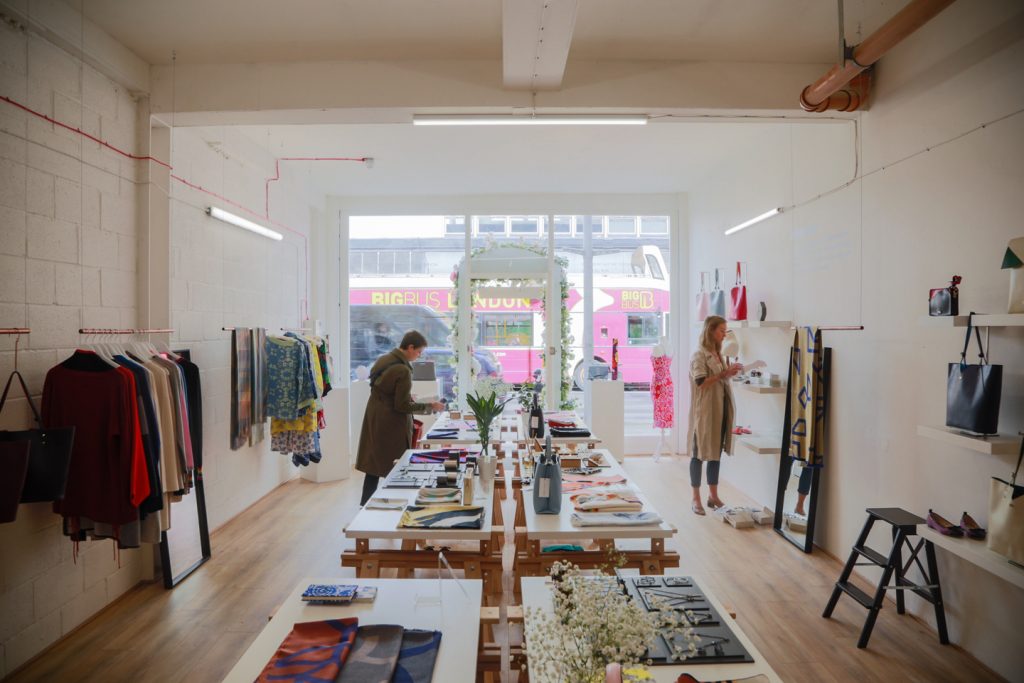
Brand benefits
- Reach potential customers – a pop-up store in a new location with high foot traffic enables a brand to get in front of a new audience.
- Experience – “pop-up retail” can be used to deliver a delightful short-term experiences or reinforce a brand message with positive customer engagement. Brands can position themselves as cultural influencers, expand their reach and build brand loyalty. As powerful as ecommerce can be, nothing compares with a physical face-to-face interaction.
- Market research – using promotions, events or competitions a pop-up event provides the perfect contact point to help you gather insight to better understand your target customers. This information can be critical in guiding future activities right across a business.
- Sell more or clear stock – while times are slowly changing it remains a fact that a huge number of transactions are still done in physical stores. A temporary storefront in an area with high foot traffic for two weeks can provide sense of urgency and drive sales or help fashion brands shift stock before it reaches the end of its shelf life.
- Launch a new product – a pop-up event is a great option to showcase a new product or range with a bang.
- Test physical retail – an online DNBV store looking to take the next step can test whether it works with pop-up retail.
- Test a new retail locations – brands looking to expand their footprint can test new neighbourhoods or countries before greater financial commitment.
Landlord benefits
- Fill vacant storefronts that would otherwise sit empty waiting for a long-term tennant.
- Provide the street and neighbourhood with an exciting and innovative attraction.
- Temporary storefronts create buzz for the property and will help attract new tenants
- Short-term leases can be set up and arranged in a short period of time.
- Test out a brand who may be looking for a longer term lease in future or more pop-ups.
Who can open a pop-up shop?
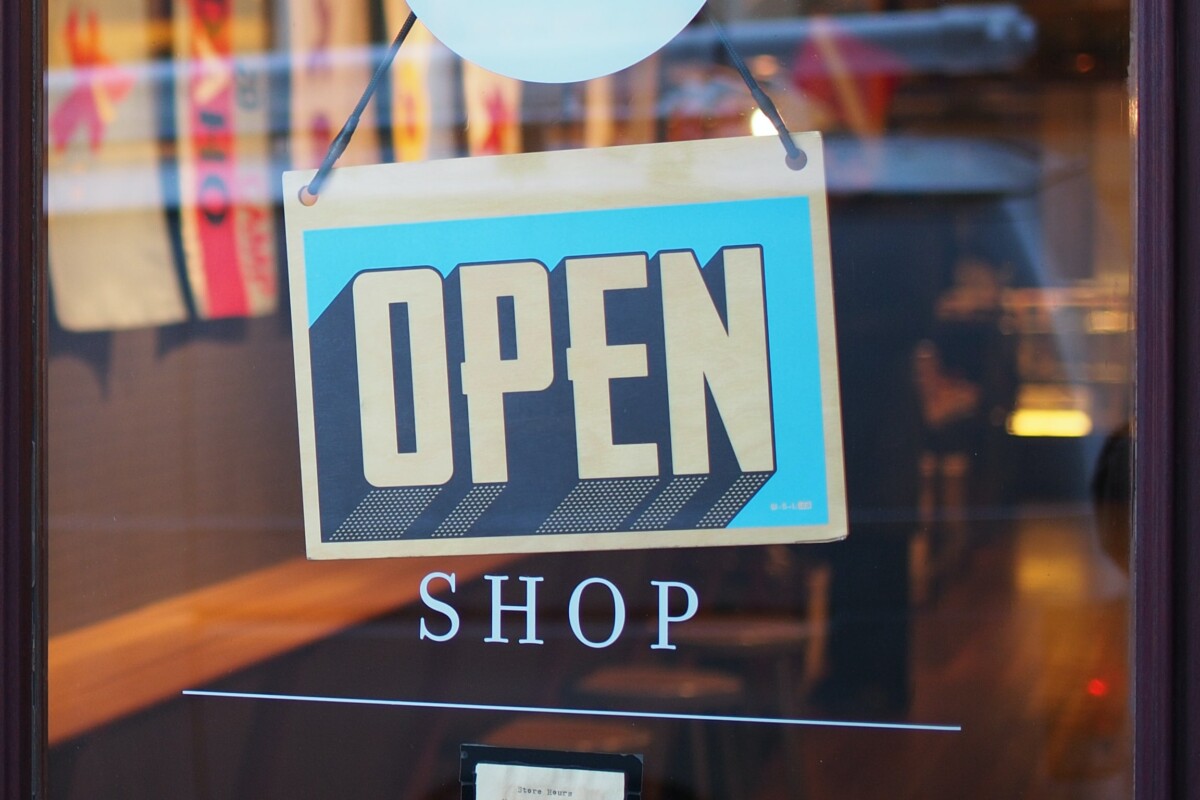
The short answer: everyone and anyone.
We’ve helped thousands of brands run successful pop-up stores. We’ve seen pop-up shops in fashion, health and beauty, online retailers, consumer goods, services, hotel chains even technology giants like Facebook and Twitter. While the big name brands such as Kate Spade, FILA, Louis Vuitton and Danone may steal the headlines, pop-up retail is an extremely valid option for a huge variety of sectors and industries.
Here are a few examples:
Fashion – everyone from large High Street brands to independent designers and local brands.
Health and Beauty – Pop-up shops are the perfect opportunity for product launches, test events and brand building exercises.
Art and artists – many artists use pop-up shops and galleries to display their collections and reach potential buyers. The flexibility of a pop-up shop allows local artists to flex their creative muscles to produce an impactful display space.
Online retailers – Pop-up stores are particularly attractive to digital first online retailers and ecommerce brands looking to extend their reach or test out physical retail. The online experience can never compete with a real world offline experience.
Retailers with existing physical presence – Retailers with an existing physical space can use them to test out new geographies or concepts. With less investment at risk you can run a six month pop-up store to see if it’s worth pursuing something more permanent.
Food and beverage providers – from ice cream to burger trucks and pop-up cafés . Pop-ups are a great way for up and coming vendors to expand their reach or test out new audiences and offerings with temporary restaurants.
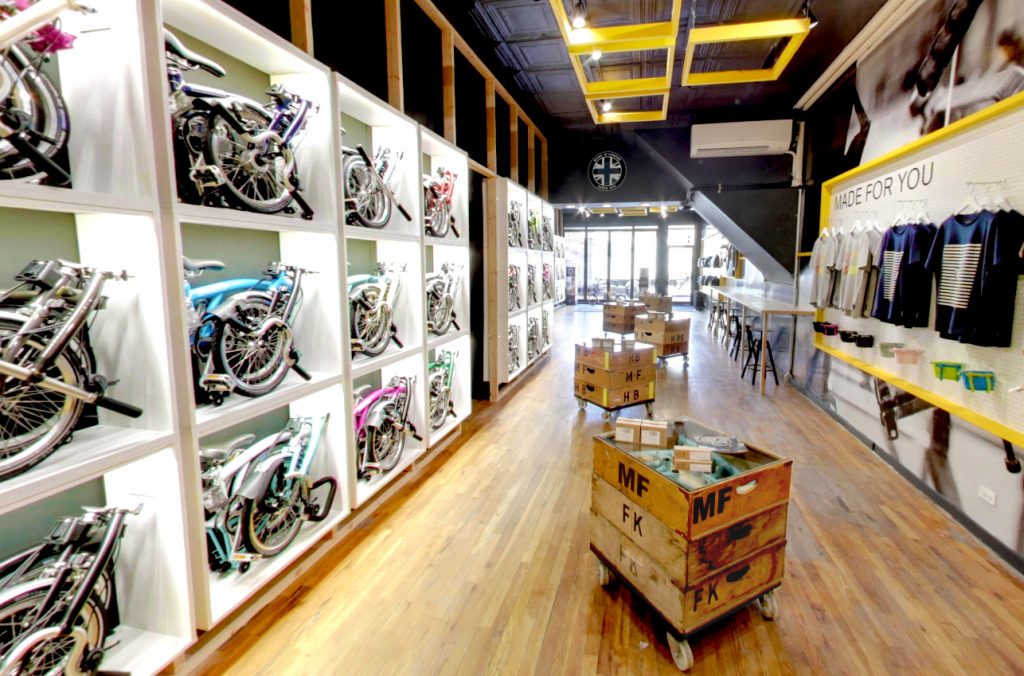
Last, but by no means least, pop-up shops are great tools for small brands just starting out. Perhaps they have been going to small markets or fairs and are considering the next step. Running a pop-up in a busy area for a week or two a couple of times a year will help them understand whether there is a market for their brand and if they move the location around they can experiment with locations.
Where are pop-ups found?
In general, pop-up retail has proven extremely popular in the United States, Canada, China, Japan, Mexico, France, Germany, the United Kingdom and Australia. It is also becoming more and more popular in Asia including Shanghai, Singapore, Hong Kong and Seoul. Pop-up shops are often found in major cities such as New York, London, Los Angeles, Paris, Milan, Hong Kong and Amsterdam. In theory they can be anywhere and we certainly have a wide range of options on the Storefront platform.
Most of the time pop-up shops are normal retail storefronts. Many landlords have dedicated temporary pop-up spaces. However, there are a large number of unusual venues that allow for some serious creativity. We’ve helped clients pop up on staircases, halls, lofts and warehouses to name a few. In reality, a pop-up shop can be absolutely anywhere.
There is a growing trend of pop-up retail spaces in shopping malls and shopping centers. Shopping malls are really good retail locations for foot traffic, public transportation and sizing up your direct competitors.
How much does a pop-up shop cost?
The cost of a pop-up shop depends hugely on what you are hoping to achieve with your pop-up, the pop-up shop location and the type of space. As we have seen there are many types of pop-up store. Factors such as duration, venue and location can vary so much that there it’s impossible to provide a relevant estimated cost for your pop-up shop. Overall however, the pop up model is considerably cheaper than traditional stores and the reduced investment means a much lower level of risk.
For more on the cost of a “pop-up” shop check out this article on ‘How much does a pop-up shop cost?‘.
How to find the perfect pop-up shop location
Right here! Thanks to Storefront, you can now find the pop up store rental in just 3 clicks. Lofts, retail spaces, apartments, malls… you’ll find a wide range of pop-up shop venues from as little as $50 a day.
So whether you want a regular storefront, an experience space or even a 220 foot long boat. Check out Storefront.
If you’re considering running a pop-up shop check out our pop up shop guide, it’s free to download.
Download the guide for everything you need to know to run your pop-up shop:
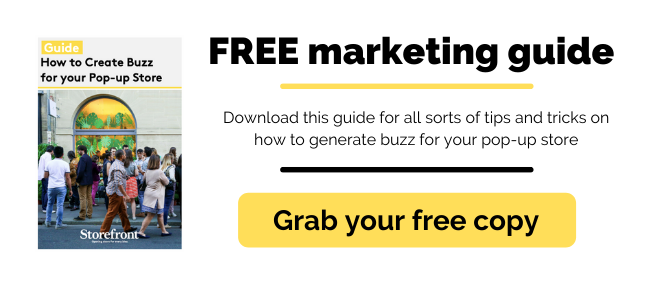
Pop-Up shop ideas
There are a few things to consider when thinking about pop-up shop ideas.
- First, what type of products or services do you want to sell?
- Second, what is your budget for the space and inventory?
- Third, what is your target market?
Assuming you have a good idea of what you want to sell, the next step is to find a suitable location. This could be a vacant storefront, a community center, or even a public park.
Once you have a space, the next step is to stock it with inventory and set up displays. If you’re on a tight budget, you can get creative with your displays. For example, you can use recycled materials or items you already have on hand.
Read More: 23 Smart Pop Up Shop Ideas to Steal From These Successful Brands
How to set up pop-up shop?
A pop-up shop is a great way to test out a new retail concept or product. They are also a great way to build brand awareness and create a buzz around your business.
Here are a few tips on how to set up a successful pop-up shop:
- Find the right location. This is key to attracting foot traffic and generating sales.
- Create a visually appealing space. This will help you stand out from the competition and attract customers.
- Make sure you have a strong marketing plan. This will help you promote your pop-up shop and generate interest.
- Have a great product or service. This is what will ultimately drive sales and keep customers coming back.
By following the above tips, you can ensure a smooth and successful pop-up shop experience for both you and your customers.
Read More: How to set up a pop-up shop. Set yourself up for success with this handy checklist
Renting a pop-up store
Are you thinking about renting a pop-up store? Here are a few things to keep in mind!
- First, consider the location of your pop-up. You’ll want to make sure it’s in a high-traffic area with good foot traffic.
- Second, think about what you’ll be selling. You’ll want to make sure you have a good mix of products that will appeal to your target customer.
- Third, make sure you have a good marketing plan in place. You’ll want to make sure you’re promoting your pop-up store ahead of time and that you have a plan for driving traffic to your store.
- Fourth, be prepared for the unexpected. Pop-up stores can be a great way to test out a new location or product, but things don’t always go as planned. Be prepared for the possibility that your store might not be as successful as you hope.
But if you keep these things in mind, renting a pop-up store can be a great way to grow your business with pop-up stores.
Read More: How To Grow Your Brand With Global Pop-Up Stores
Conclusion
In summary, Pop-up stores are temporary stores that use innovative strategies to target customers. These stores promote products or services by temporarily occupying a retail space. Pop-up stores are cost-effective, and they allow businesses to get exposure and new customers.

